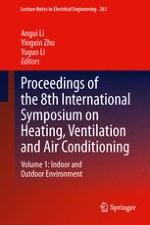2014 | OriginalPaper | Chapter
26. Passengers’ Exposure to PM2.5, PM10, and CO2 in Typical Underground Subway Platforms in Shanghai
Authors : Huan Ma, Henggen Shen, Zhen Liang, Liuchuang Zhang, Chan Xia
Published in: Proceedings of the 8th International Symposium on Heating, Ventilation and Air Conditioning
Publisher: Springer Berlin Heidelberg
Activate our intelligent search to find suitable subject content or patents.
Select sections of text to find matching patents with Artificial Intelligence. powered by
Select sections of text to find additional relevant content using AI-assisted search. powered by
